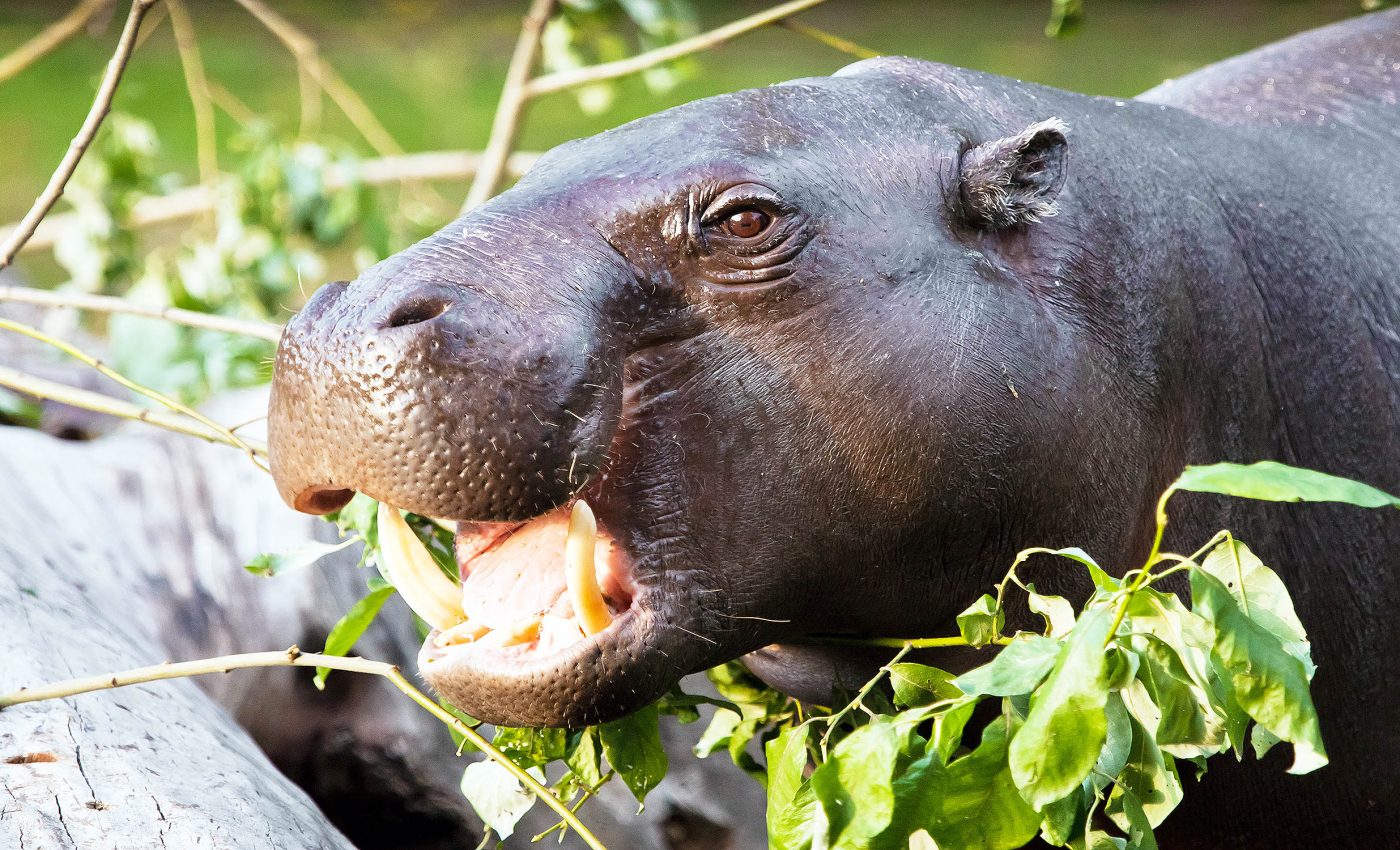
Extinction of dwarf elephants and hippos directly linked to humans
The extinction of dwarf elephants and hippos during the Late Pleistocene remains one of the most intriguing prehistoric mysteries.
In the sprawling Mediterranean landscape of Cyprus, these were the only two species of megafauna to inhabit the island.
The 500-kg dwarf elephant (Palaeoloxodon cypriotes, approximately 1,102 lbs) and the 130-kg dwarf hippo (Phanourios minor, approximately 287 lbs) roamed the island, but their presence was short-lived.
Both species mysteriously disappeared around the time humans arrived roughly 14,000 years ago.
This rapid extinction has long puzzled scholars, as previous theories argued that the introduction of a small human population on Cyprus couldn’t have caused such swift extinctions.
However, recent research, led by Professor Corey Bradshaw from Flinders University, suggests a different story, offering new insights into this prehistoric puzzle.
New perspective on dwarf elephant extinction
The study, funded by the European Regional Development Fund and the Republic of Cyprus through the Research and Innovation Foundation for project MIGRATE, found that Paleolithic hunter-gatherers likely played a pivotal role in the extinction of these dwarf species.
Through mathematical models that combine paleontological and archaeological data, the research team examined how human hunting practices, diet composition, and prey selection could have driven the dwarf elephants and hippos to extinction in less than 1,000 years.
“Our results provide strong evidence that Paleolithic peoples in Cyprus were at least partially responsible for megafauna extinctions during the Late Pleistocene and early Holocene,” explains lead author Professor Corey Bradshaw.
“The main determinant of extinction risk for both species was the proportion of edible meat they provided to the first people on the island,” he adds.
Unveiling the role of hunter-gatherers
Using data-driven approaches, the research team, including Drs. Theodora Moutsiou, Christian Reepmeyer, Frédérik Saltré, and Stefani Crabtree, analyzed the impact of human populations ranging from 3,000 to 7,000 individuals.
The findings show that even relatively small groups of hunter-gatherers could have hunted the island’s megafauna to extinction within a short timeframe.
This challenges the earlier belief that such extinctions would have required a much larger human presence.
“Cyprus is the perfect location to test our models because the island offers an ideal set of conditions to examine whether the arrival of populations of humans ultimately led to the extinction of its megafauna species,” says Dr. Theodora Moutsiou.
“The island’s insular environment provides a window back in time through our data, enabling us to better understand how human activities can disrupt ecosystems and drive species to extinction.”
Chronology of dwarf elephant extinction
The study’s predictions align with the documented chronology of megafauna extinctions in paleontological records, further supporting the theory that human arrival marked a turning point for the island’s ecosystems.
Previous findings by Professor Bradshaw, Dr. Moutsiou, and collaborators have also shown that large groups of humans may have arrived on Cyprus in two to three main migration waves, further contributing to the rapid disappearance of these remarkable animals.
Human-induced extinctions
This research not only provides insights into the specific case of Cyprus but also highlights broader patterns of human-driven extinctions across the globe.
During the Late Pleistocene, as hunter-gatherer populations spread, many islands and isolated ecosystems experienced the extinction of their native megafauna.
Similar events unfolded in regions like Madagascar and New Zealand, where human arrival led to the rapid disappearance of unique species that had previously thrived without human predators.
The extinction of Cyprus’ megafauna illustrates how even small human populations can drastically affect biodiversity.
Understanding these past events is critical for informing modern conservation strategies, helping to prevent today’s endangered species from facing similar outcomes.
Additionally, the study emphasizes the significance of islands as vital locations for examining extinction patterns beyond dwarf elephants. Isolated environments like Cyprus provide a controlled system where human impacts on ecosystems can be closely observed.
These findings highlight the need for careful conservation efforts to maintain the balance of species survival in such fragile ecosystems as human activity continues to expand.
The full study was published in the journal Proceedings of the Royal Society B Biological Sciences.
—–
Like what you read? Subscribe to our newsletter for engaging articles, exclusive content, and the latest updates.
Check us out on EarthSnap, a free app brought to you by Eric Ralls and Earth.com.
—–













